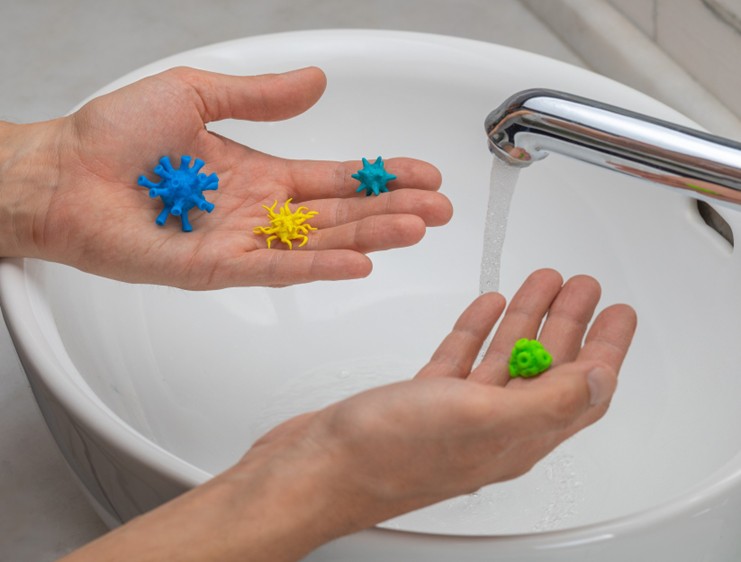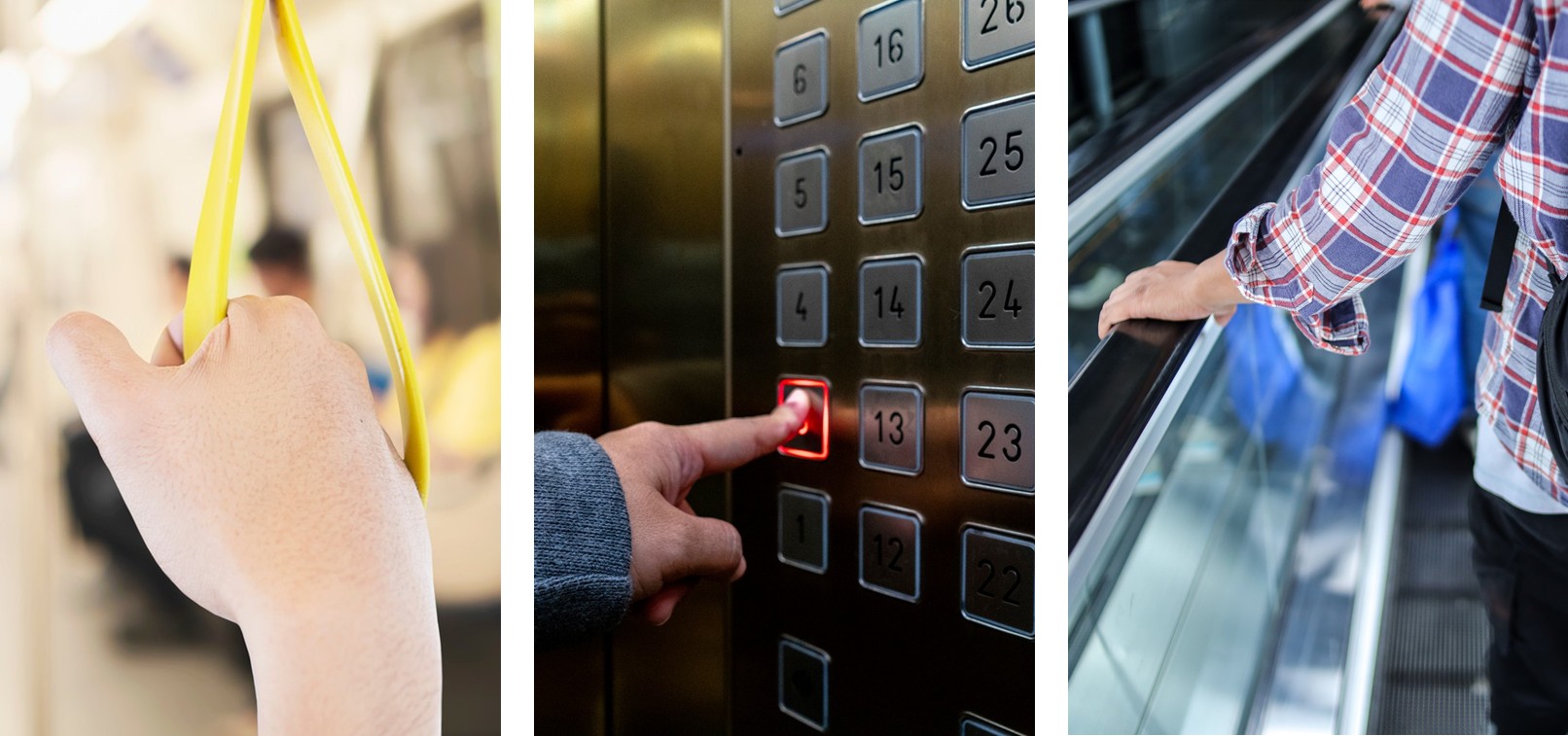
Everyday surfaces look clean, but they may be carrying invisible passengers, the germs that follow you wherever you go.

High-touch surfaces are germ hotspots:

Frequent contact by multiple people without regular disinfection makes them reservoirs for pathogens. Hands transfer germs rapidly to the face, common touchpoints that invite infection. Even visually “clean” surfaces can be microbiologically contaminated.


In a U.S. study, 72% of shopping carts had coliform bacteria, and 51% had E. coli. Some carts carried up to 11 million bacterial cells! SARS-CoV-2 RNA has also been detected on about 32.5% of shopping cart handles, 23% of ATMs, and 16.7% of elevator buttons in retail setting.

In airport settings, over 25,900 surface touches were tracked in a single study with norovirus infection risk. High-touch hospital surfaces like bedrails, call buttons, keyboards, slit lamps, and workstations harbor dangerous pathogens including MRSA, Acinetobacter, E. coli, C. difficile, and more.

Through surface-mediated transmission
Step 1 – Shedding: An infected person sheds pathogens (through coughing, sneezing, or touching). Germs land on hands or directly on a surface.
Step 2 – Persistence: Pathogens survive on surfaces for hours to days, depending on the material and environment.
Step 3 – Transfer: A susceptible person touches the contaminated surface, transferring germs to their hands. Germs then reach the mouth, nose, or eyes.
Step 4 – Infection: Once inside the body, the pathogens can multiply and cause illness.

| Area | Key Impact |
| Healthcare | Millions affected, tens of thousands of deaths, billions in treatment costs. |
| Workplace | Illness-related absenteeism can cause lower productivity. |
| Public Health | Unsafe water, sanitation, and hygiene (WASH) environments linked to millions of lost lives and disability-adjusted life years (DALYs). |

Biorism 360° formulation stabilizes antimicrobial agents for maximum efficiency, delivering proven protection that lasts up to 72 hours in lab tests.
A disinfectant shouldn’t just kill germs on contact. It should provide long-lasting defense, ensuring truly hygienic, worry-free surfaces.
Reduce daily cleaning, lower supply costs, and ensure top protection while staying safe and sustainable. That’s the real value Biorism 360° delivers to workplaces, homes, healthcare, and hospitality.
References:
The article is prepared by Biorism Scientist, Dr Maisarah, (PhD in Molecular & Cellular Biology).